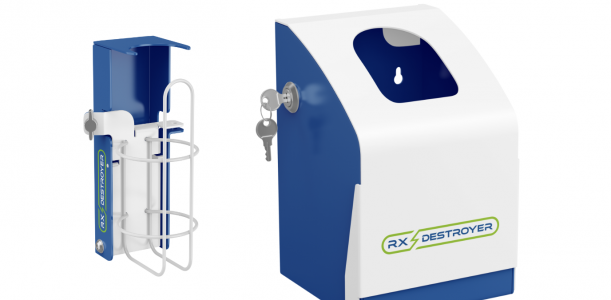Top Reasons to Properly Secure Pharmaceutical Waste
October 10, 2022 | Drug Diversion Prevention
Proper medical waste deactivation and disposal is an accepted practice that’s become a way of life for healthcare professionals. Hospitals, clinics, and other patient care facilities across the country place significant effort on eradicating pharmaceutical misuse. Drugs, which should be secure and accounted for, or disposed of properly, can wind up in places they shouldn’t. Whether you are a healthcare professional who directly cares for patients, or a leader in administration, it’s not only important to deactivate pharmaceuticals, but also the pharmaceutical waste that is generated. The Drug Enforcement Administration (DEA) outlines federal agencies guidelines including the Final Ruling of Disposal of Controlled substances.
The Dangers of Non-Secure Pharmaceutical Waste
Most professionals in the healthcare industry understand the importance of securing pharmaceuticals. However, that is only one part of the equation. Pharmaceutical waste also needs to be just as effectively secured. Pharmaceutical waste isn’t always treated with the same level of scrutiny even though it has the same potential dangers. Just as pharmaceuticals can be mishandled, pharmaceutical waste can pose equal or greater dangers.
A Potential Source of Drug Diversion
Drug diversion refers to the unintended distribution of prescription drugs. This may involve the theft of drugs, for personal use or sale. Typically, most of us think of this scenario as involving the pharmacy or medication cabinets. But, if these medications are not properly secured once they have been disposed of, it can become another source of drug diversion.
This can occur after pharmaceuticals have been disposed of if they are not properly deactivated. The DEA irretrievable standard requires destruction methods to render all controlled substances non-retrievable, even mixtures where any controlled substance is likely to be present.
Medical professionals are sometimes involved in these drug diversion scenarios. Although it is an extremely small percentage of staff that mishandle drugs, one isolated incident is all it takes to create significant problems. Those involved could be doctors, nurses, pharmacists, assistants, janitorial staff, or receptionists.
Common types of pharmaceuticals involved in drug diversion include:
- Opioids
- Central nervous system depressants
- Stimulants
- Hallucinogens
- Anabolic steroids
Dangers to Staff Handling Pharmaceutical Waste
Clinics and other facilities need proper procedures for handling drug waste. However, they aren’t always in place or followed. It could mean that drugs end up in nonhazardous pharmaceutical containers and in the hospital’s unregulated waste or drugs could end up in the wrong hands.
When this happens, unauthorized personnel could potentially find and use the drugs, and staff handling the waste could be in danger. Without the proper handling of certain drugs or medications, it could place staff in serious danger. Nitroglycerin transdermal patches, for example, might not be addictive, but touching them can cause headaches, dizziness, nausea, and flushing. Other types of drugs can be even more dangerous and result in fatality.
Deactivation Helps Curb Devastating Addiction Issues
The National Center for Drug Abuse Statistics has found that around 59 million people have reported misusing prescription drugs or illegal drugs in the past year. 50% of people who are over the age of 12 in the United States have illicitly used drugs at some point in their lifetime. Nearly 92,000 drug overdose deaths occurred in 2020, which includes deaths from opioids such as prescription painkillers.
Healthcare facilities can ensure that their facilities do not encourage or facilitate illicit drug use. By using irretrievable containment systems for their discarded pharmaceuticals, they can effectively remove a key route to illegal access. This can cut down on a number of dangerous scenarios that can leave pharmaceuticals, including RCRA hazardous drugs easily accessible to staff and patients.
By using a secure, irretrievable system, facilities can prevent a number of system errors from occuring, such as the improper disposal of pharmaceuticals into non-hazardous pharmaceutical containers or unsecured regulated medical waste bins. Pairing a secured pharmaceutical waste system with a user-friendly denaturing system can eliminate confusion of where pharmaceuticals should be placed.
How Can Pharmaceutical Waste be Better Secured?
Rx Destroyer custom designed bottle mounting accessories are designed for secure mounting and permanent placement of Rx Destroyer products. Our accessories have medical grade steel that provides an enhanced level of security that removes potential for unauthorized removal and diversion. Our Lockboxes come with a lock and key and can be affixed to both wall and counter surfaces, and the Wire Mount has an adjoined lockable cable and can be easily attached to med carts or mounted to walls.
Whether a substance is RCRA hazardous pharmaceutical waste or non-hazardous pharmaceutical waste (as determined by the EPA), controlled or non-controlled pharmaceutical waste (as characterized by the DEA), having the proper disposal solutions which are secured is essential to creating a safer and more compliant healthcare environment.


